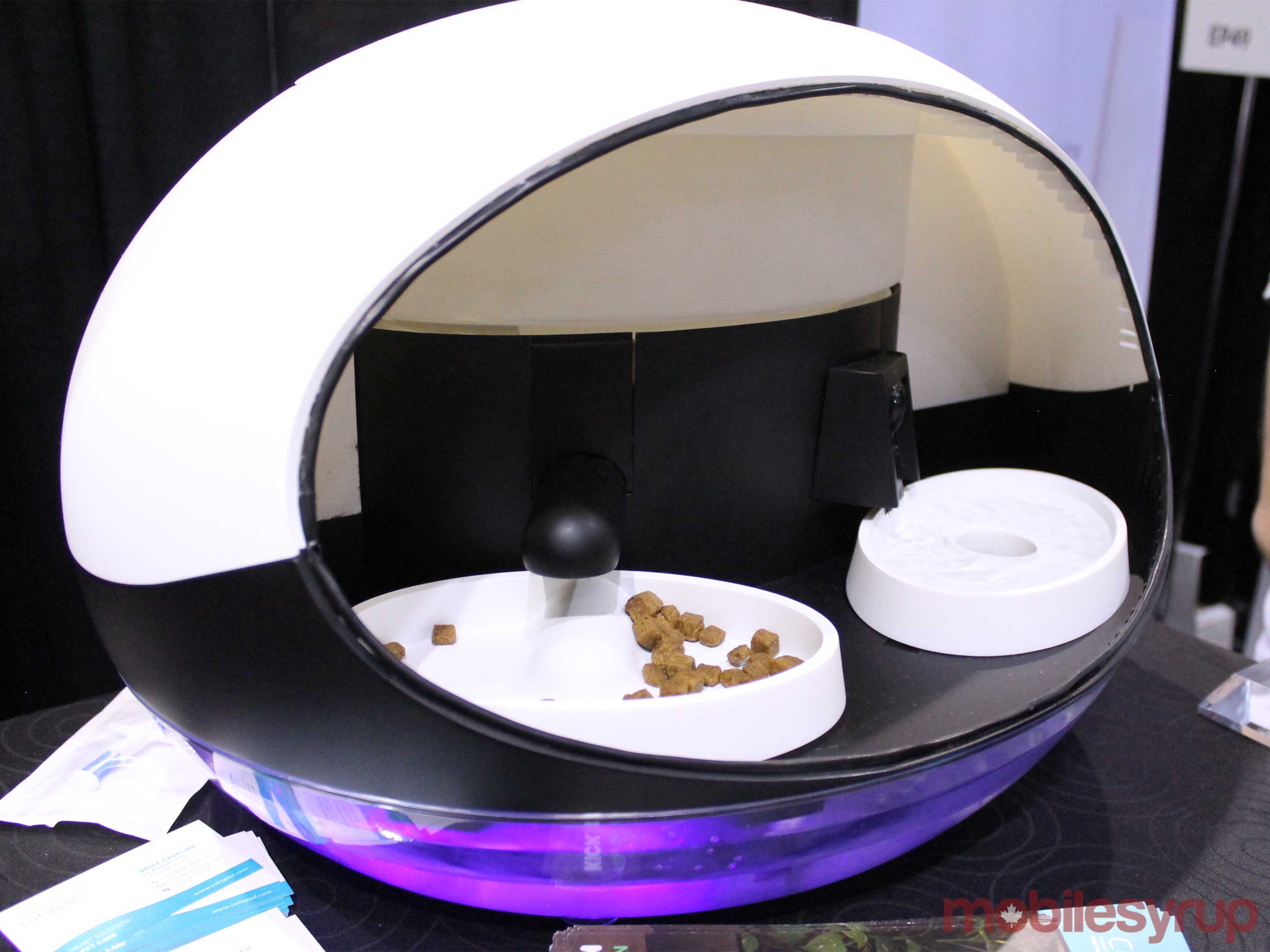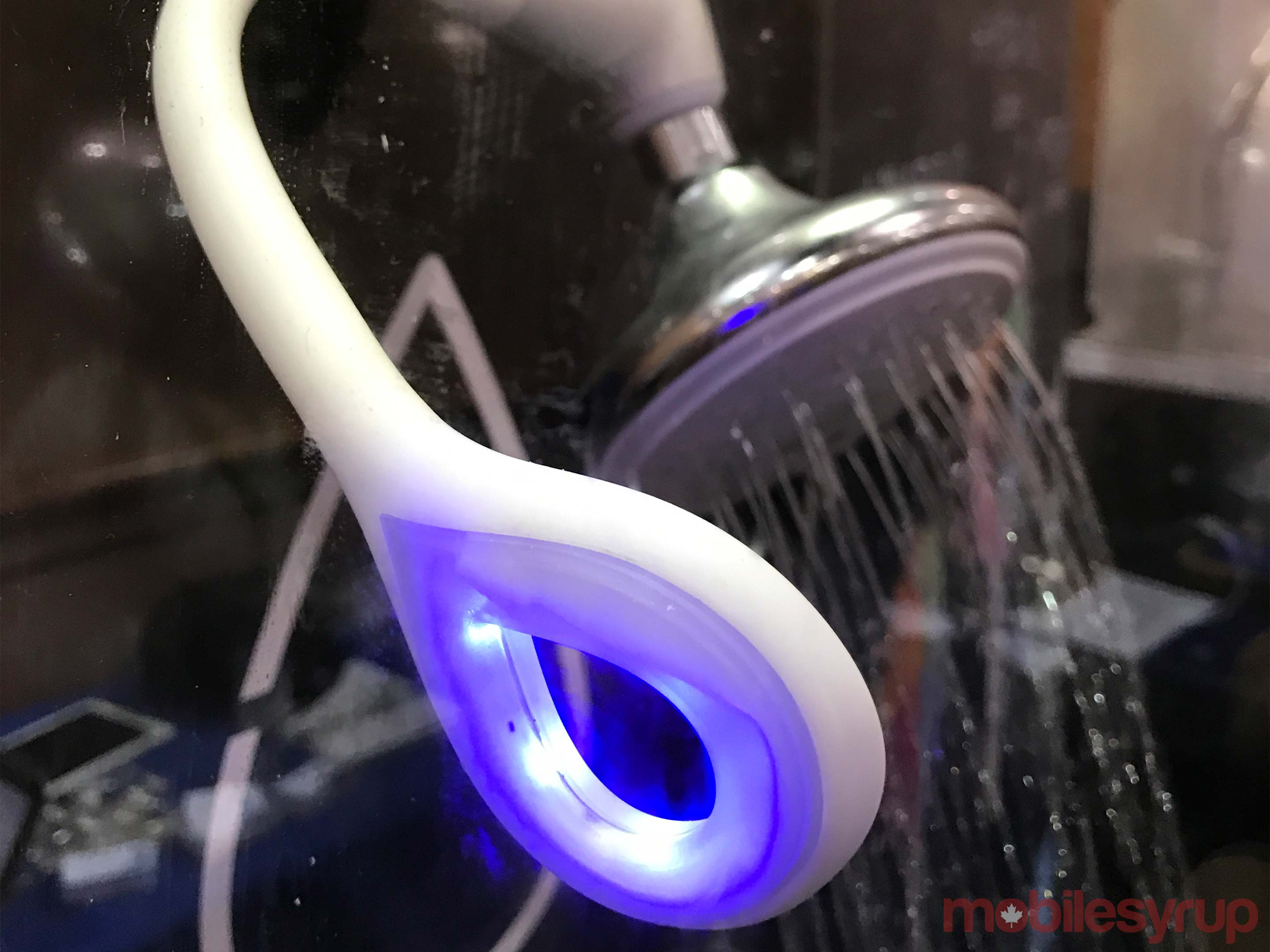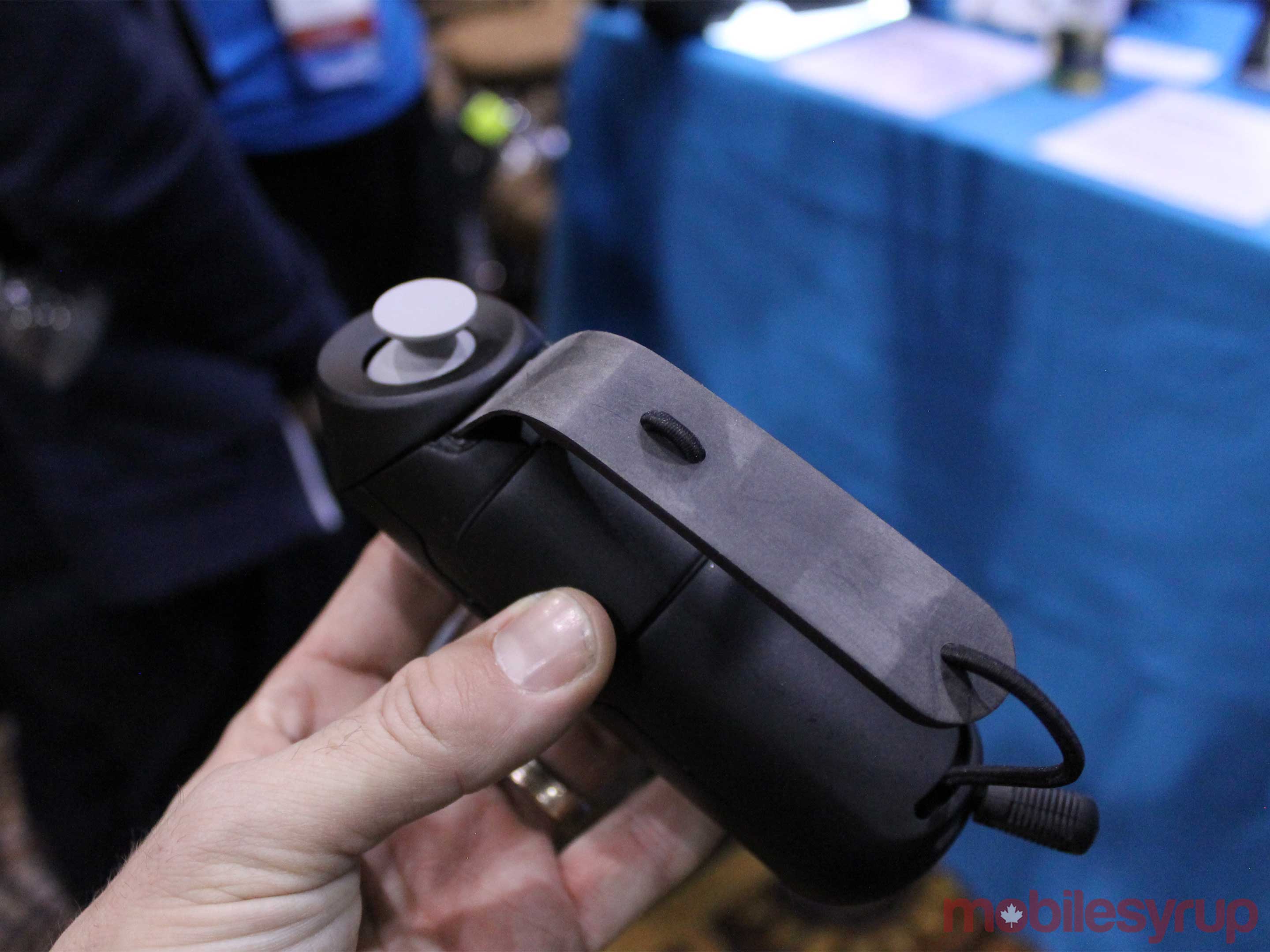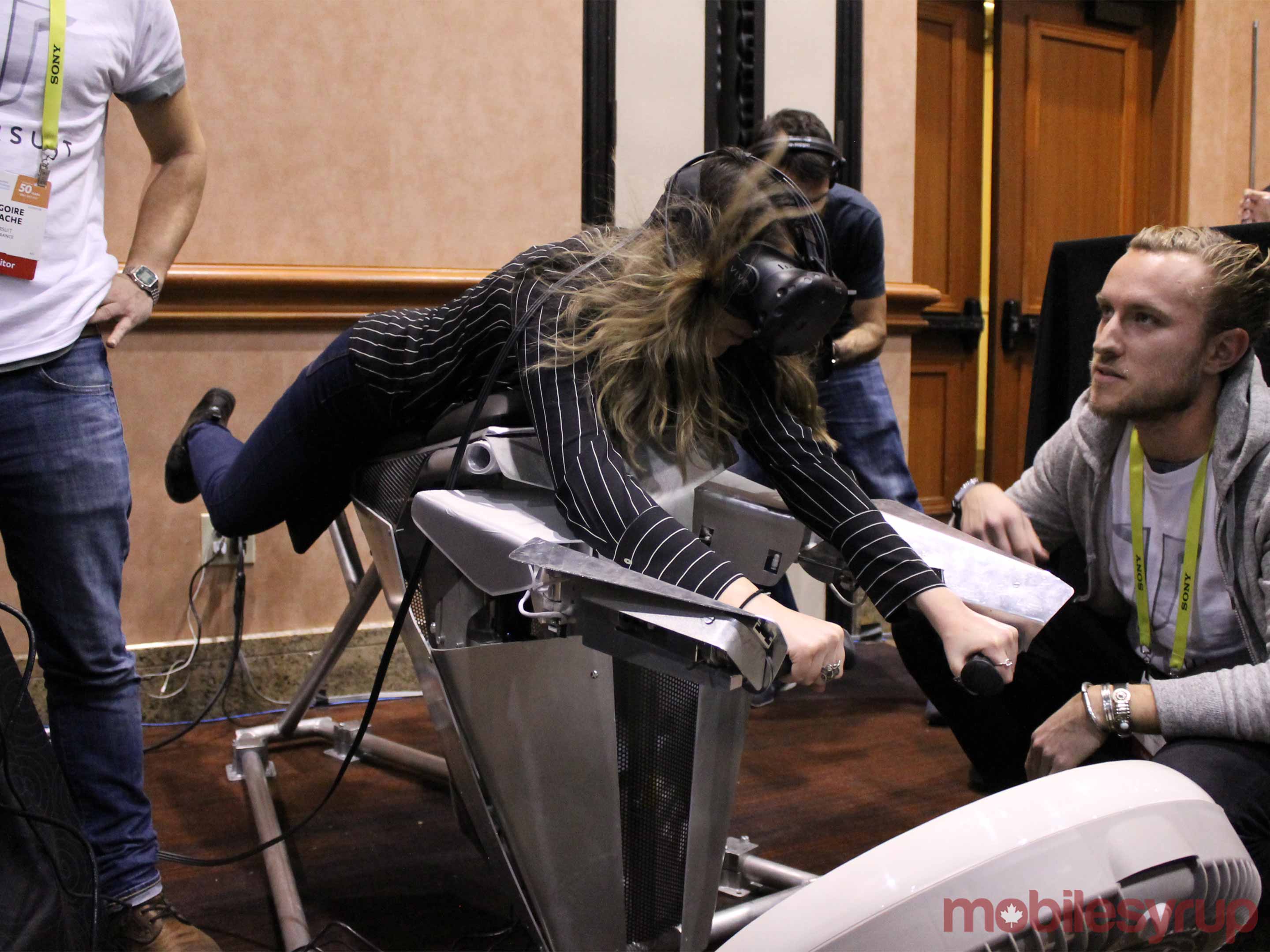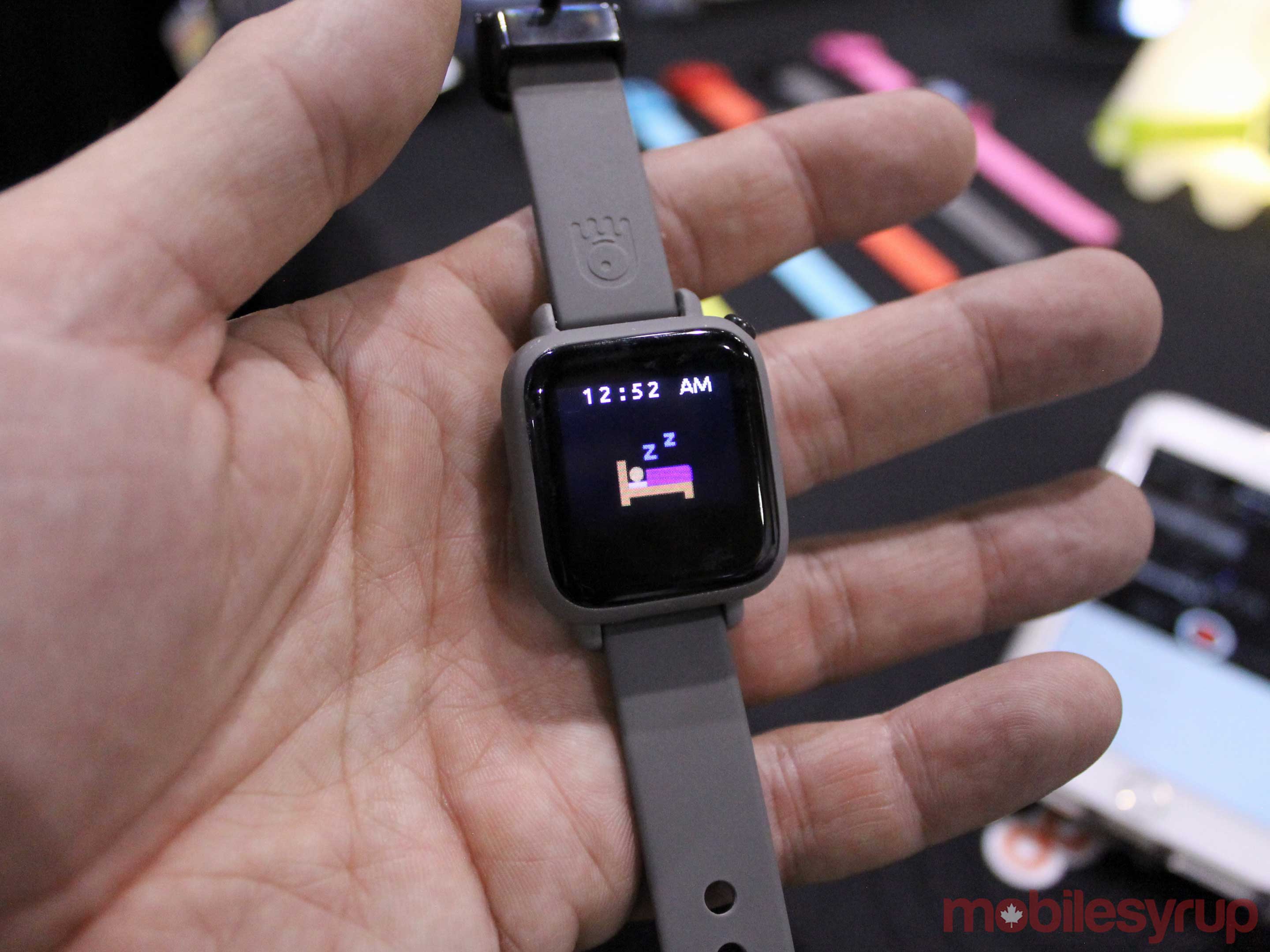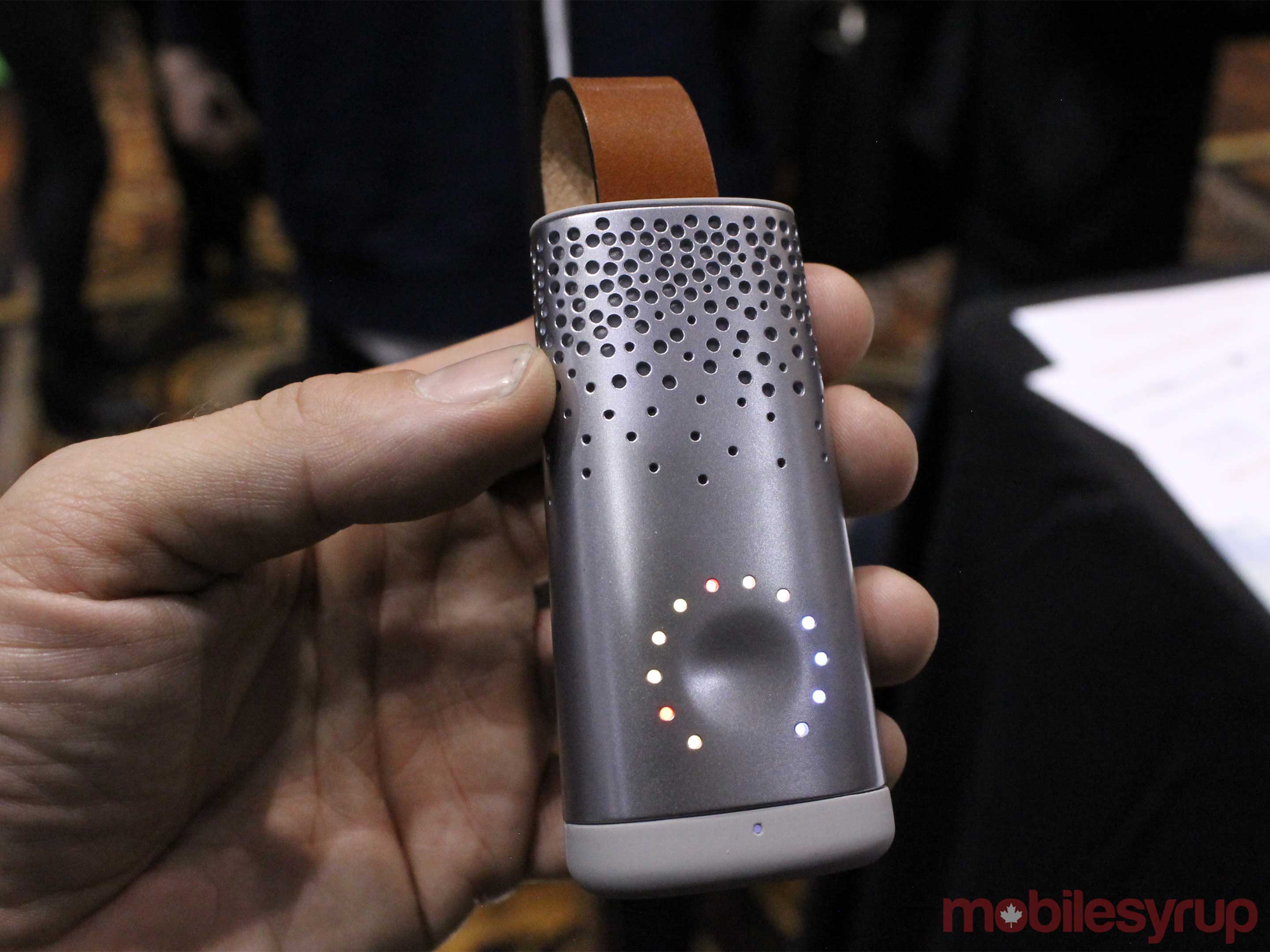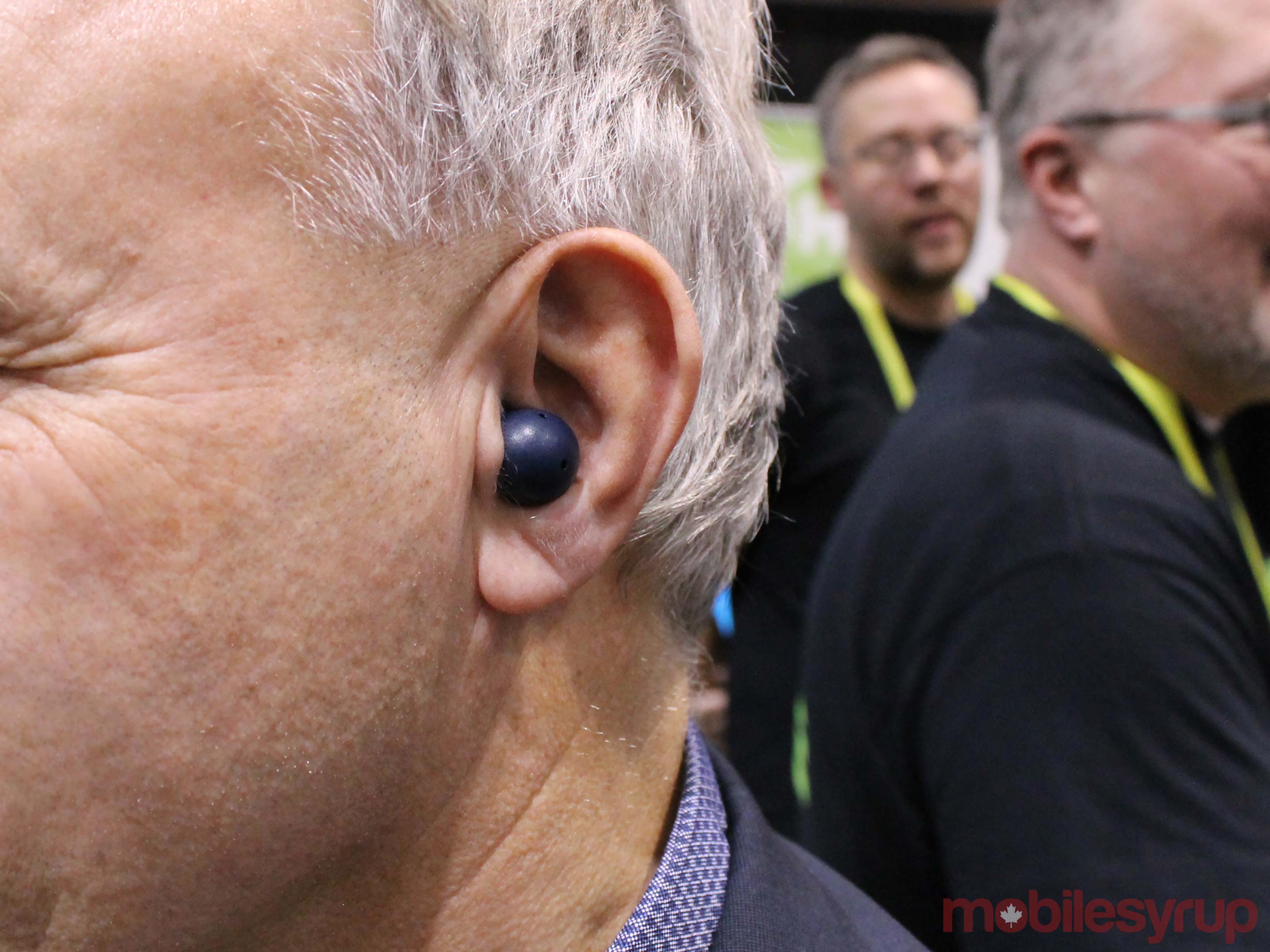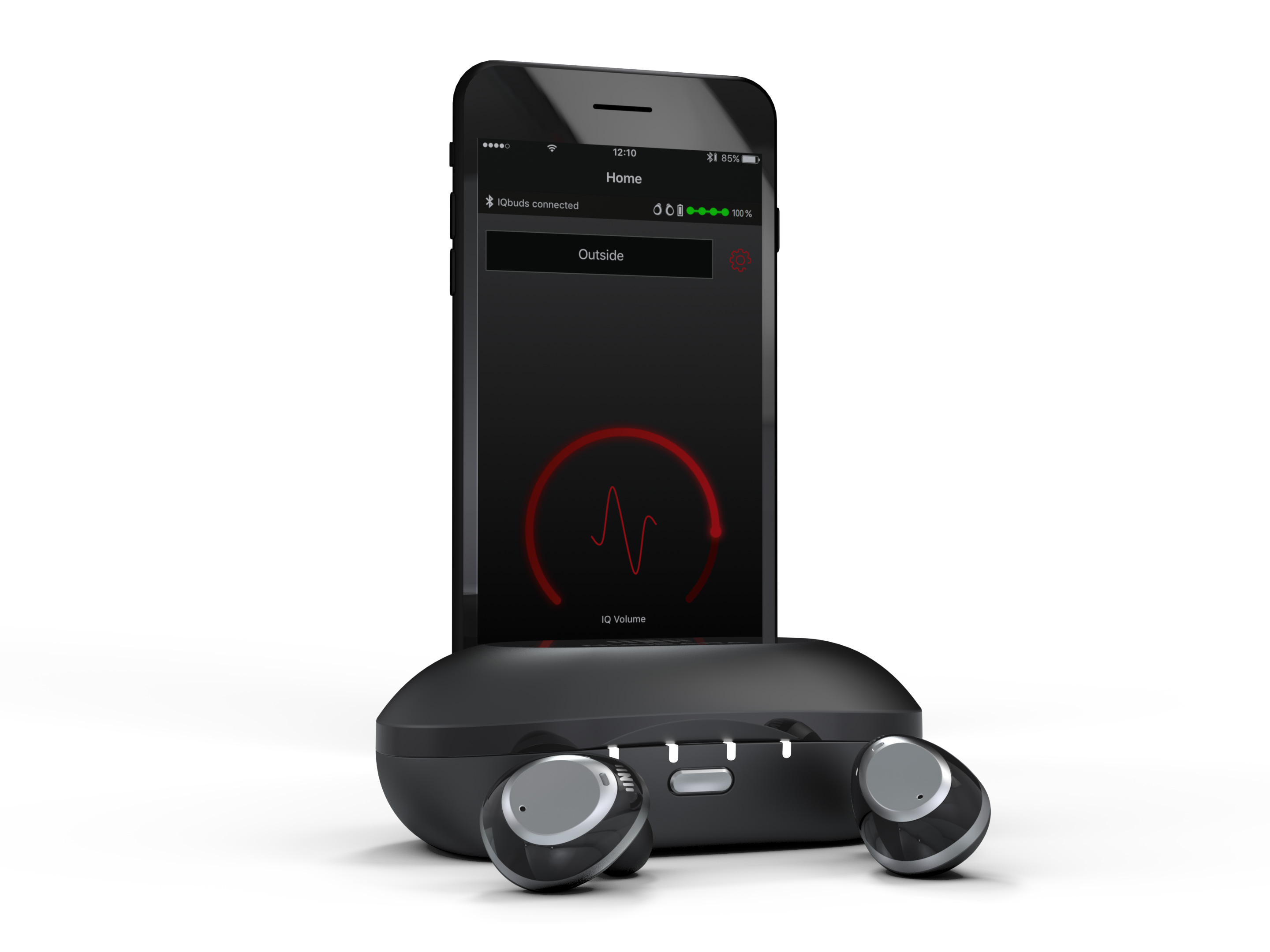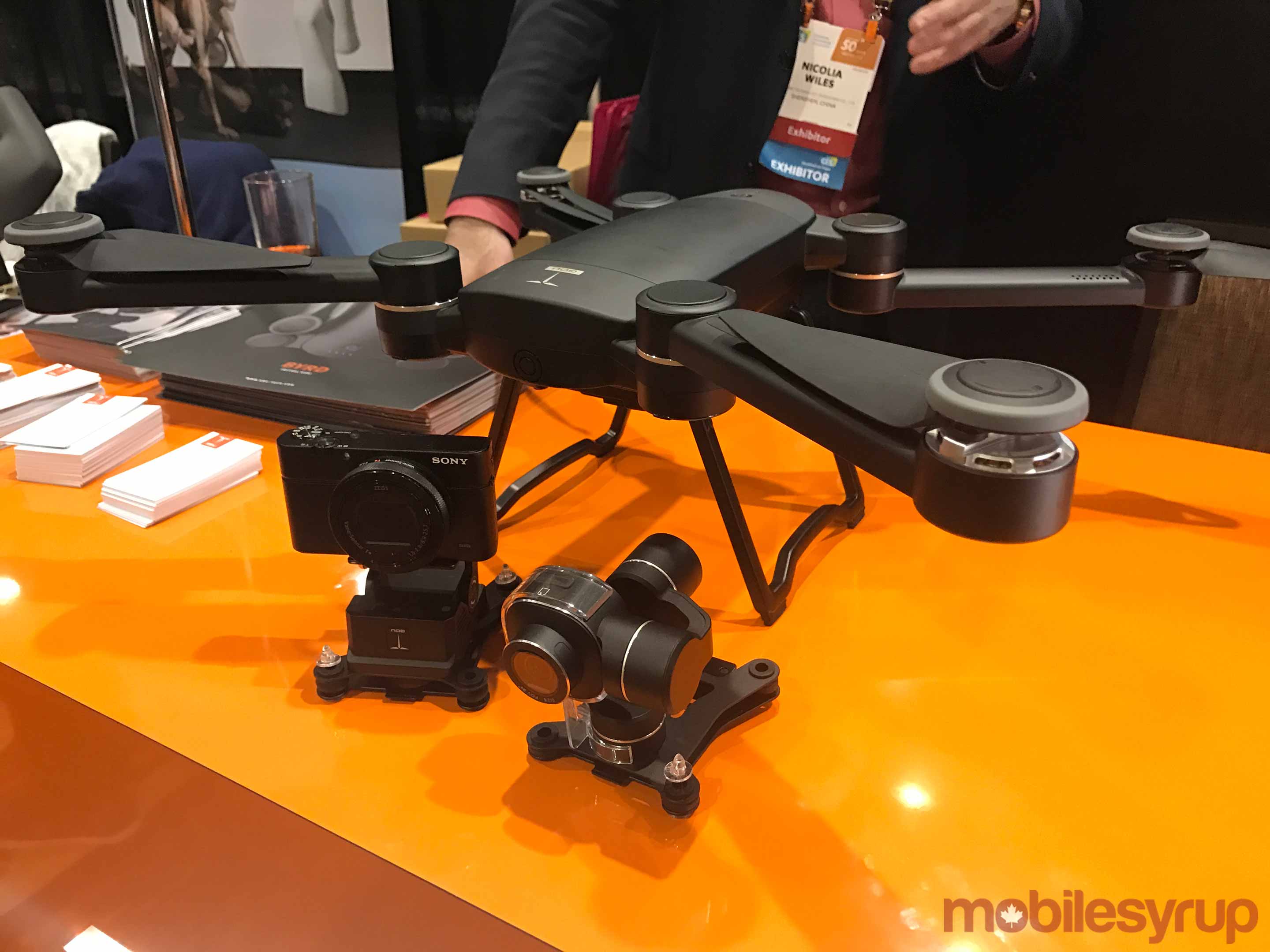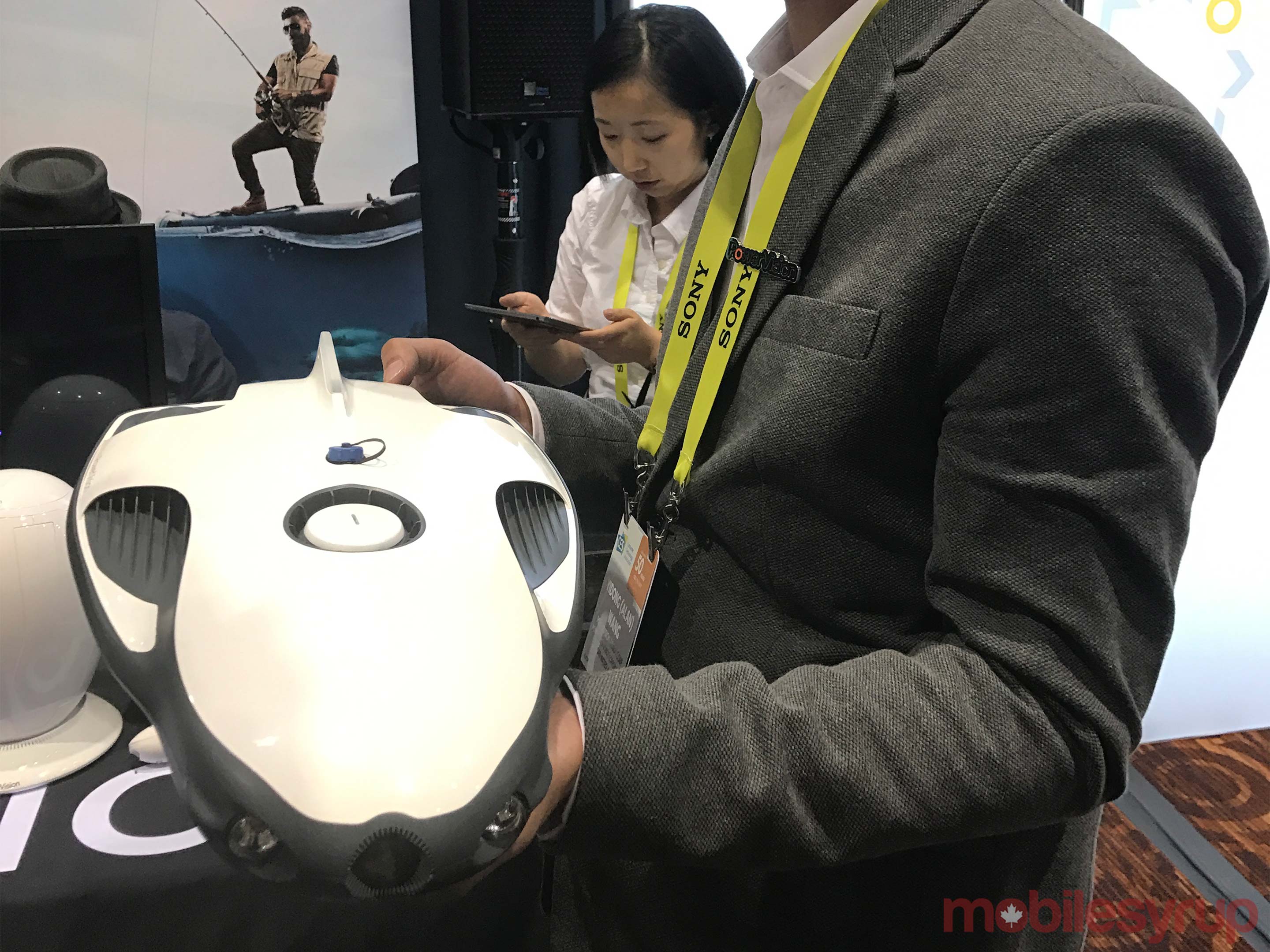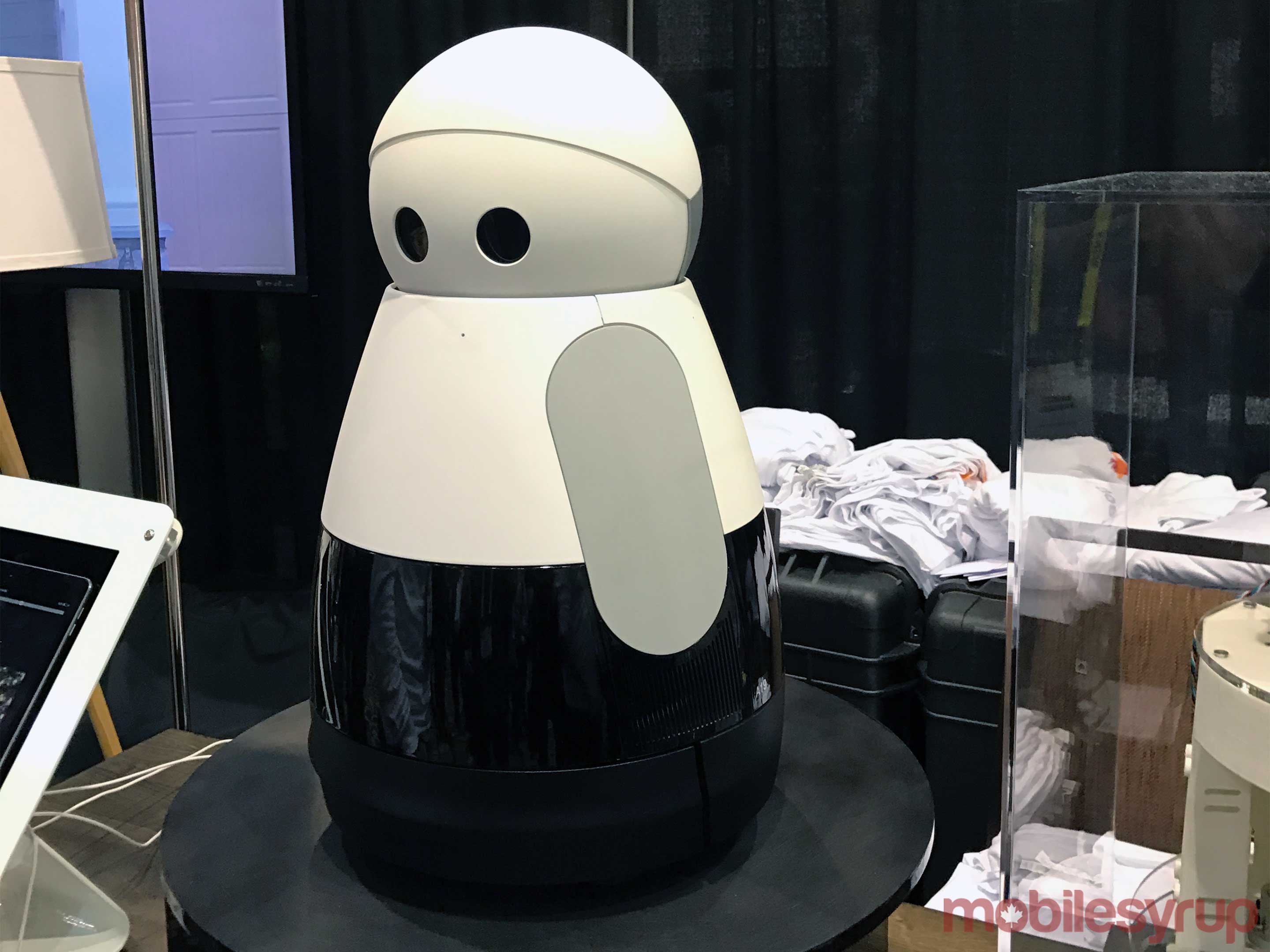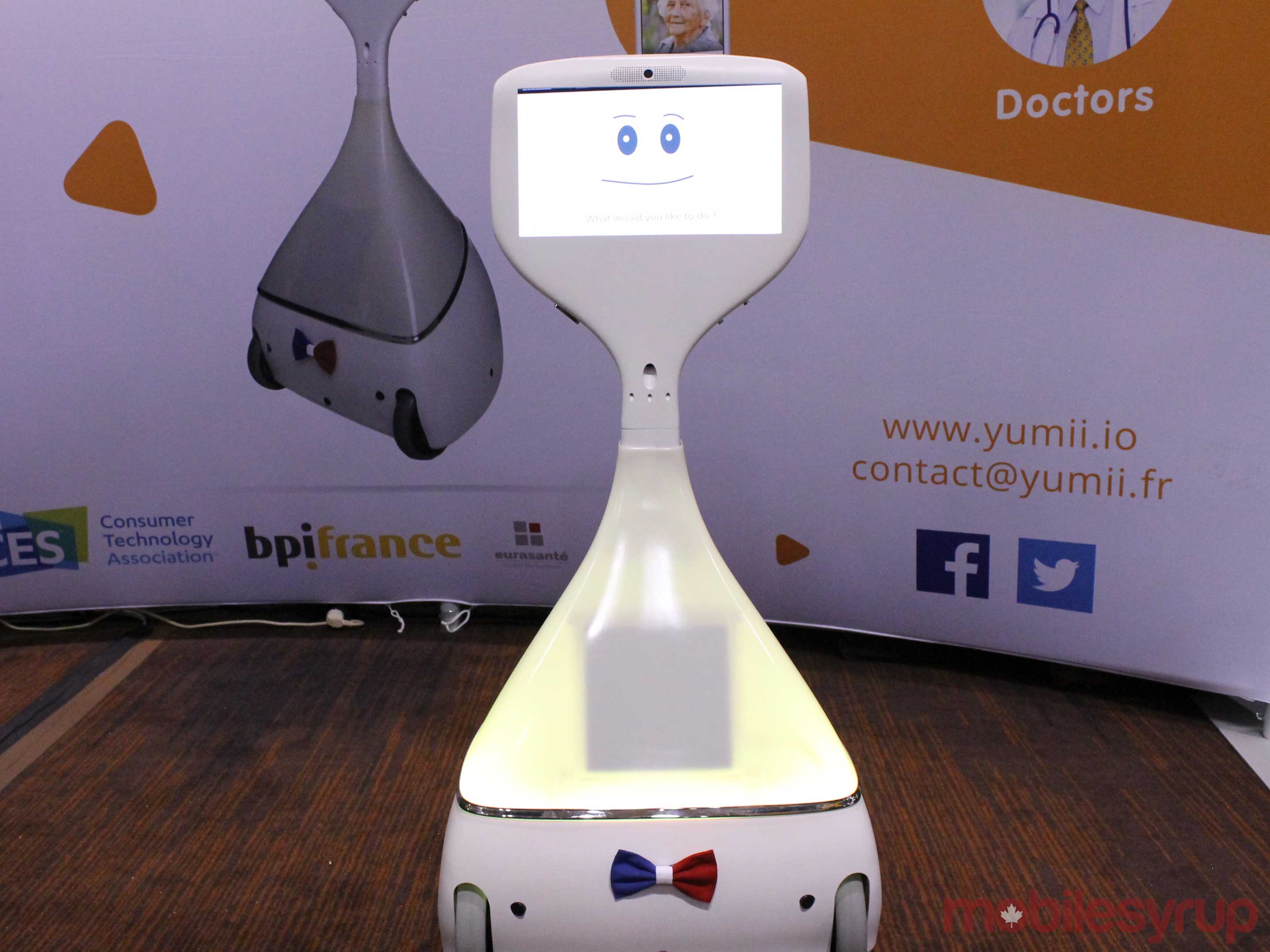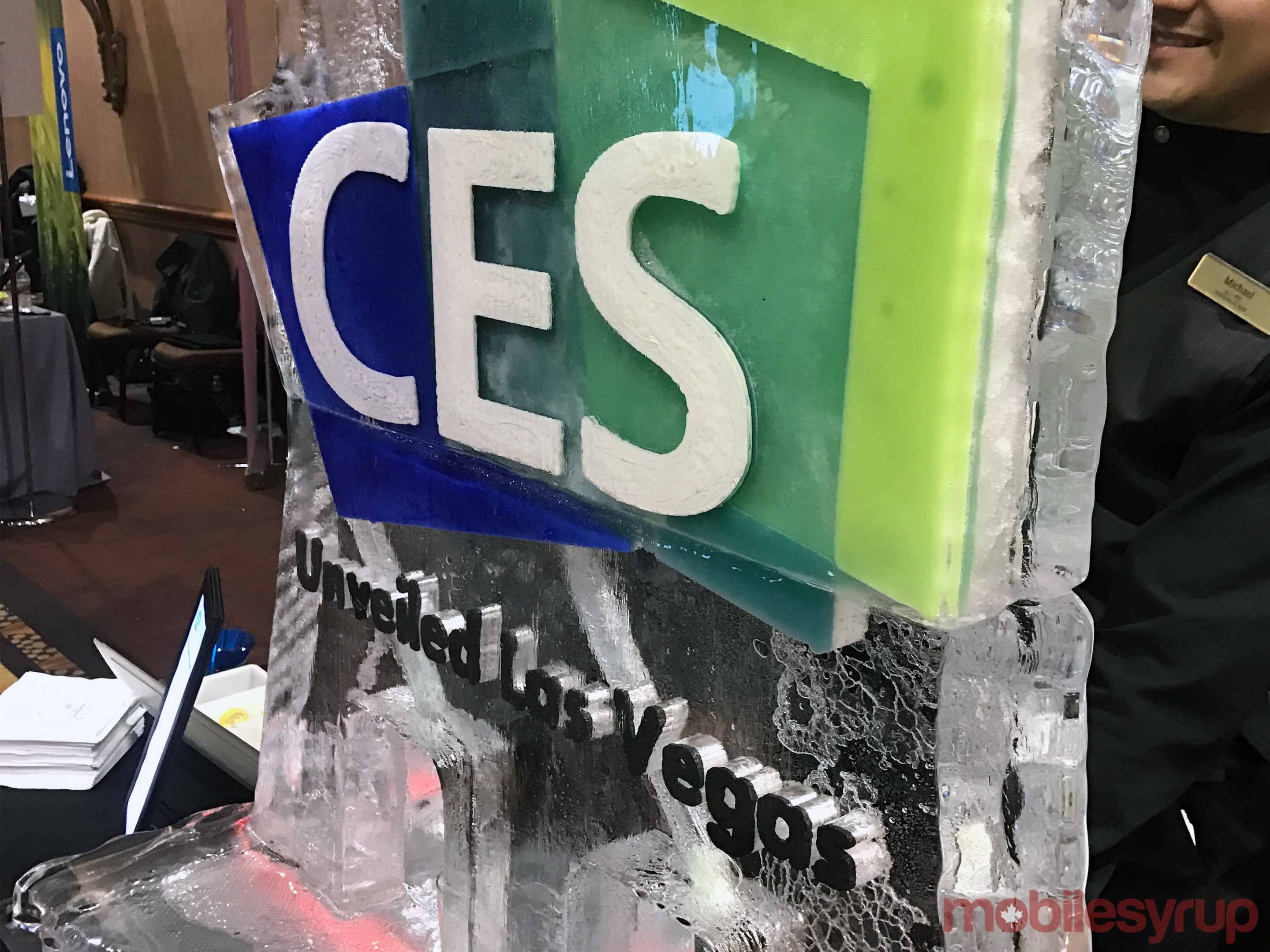
This is a big year for the Consumer Electronics Show (CES) as it turns 50, with the Consumer Technology Association (CTA), the producing organization behind the event, promising 3,800 plus exhibitors.
During a sneak peek media preview event dubbed CES Unveiled, I got the chance to check out many of these exhibitors and saw a number of recurring tech themes while walking the floor.
All things smart
As expected, there was a number of ‘smart’ products for your home at Unveiled. CTA expects that the smart home market will add up to $3.5 billion USD in revenue this year, with over 29 million units making their way into people’s home. Everything at Unveiled was connected, from cat feeders to shower heads and more. What was new this year were the number of devices that featured Amazon Echo support, such as asking Alexa to find your keys using Trackr, or inquiring about the air quality in your house with Coway’s smart air purifier, Airmega.
As an owner of two cats, I was impressed with Catspad, a connected cat feeder that uses RFID to detect your cat and dispense its food. This automatic feeder lets cat owners control the time, amount and how often your cats are fed and keeps tabs on their eating and drinking habits in the companion mobile app.
There were also a number of connected solutions designed to help with water management. Hydrao, for example, uses colour to cue your water usage in the bath tub. Using an integrated LED system, this smart shower head lights up the water spray with different colours depending on the amount of water used. Like all smart things, you can view your water consumption over time via a companion app.
This year’s Unveiled also featured connected toys, connected beds and connected toothbrushes.
Accessories aim to make VR more natural and immersive
2016 was a banner year for VR HMDs, with both mobile and PC devices hitting the market. According to analytics firm CTA, 2017 will continue to see growth in this space with 2.5 million AR/VR hardware units expected to ship, bringing in $660 million in revenue.
Although there were few new VR HMDs at CES Unveiled apart from a design prototype of LG’s upcoming Windows 10 Holographic VR headset, VR accessories were prevalent. Japanese company Cerevo — which showed off its projector robot Tipron last year — demonstrated Taclim, a set of gloves and shoes with built-in haptic feedback which let users feel the virtual world.
Taclim features a total of eight haptic zones across hands and feet which can be individually configured with different patterns and intensity to make VR feel more real. Both the shoes and gloves (and I am using these terms loosely as you can see from the pictures) are also equipped with 9-axis sensors which also make them an input device to capture movement. The system will be available for purchase in the Fall of this year with a hefty price tag between $1,000 to $1,500.
Cerevo wasn’t alone in the quest to put our bodies in VR, either. 3D Rudder’s foot controller, Theory’s elaborate flight simulator, Hypersuit, Xenoma’s 14-sensor motion capture suit, e-skin, and the uSens hand-tracking sensor, Fingo, were also all at Unveiled.
Wearables for everyone
With over 250 wearable exhibitors expected at CES, it was no surprised that Unveiled was flooded with wearable tech. There was a wearable for everyone on the floor, from babies to cyclists, to horses and dogs. Amidst this sea of wearables, Joy’s Octopus watch for kids stood out.
Octopus is a simple smartwatch for kids between 3-8 which uses icons to teach them good habits and the concept of time. Parents use the companion Octopus app to configure reminders leveraging over 500 icons representing anything from ballet class to brushing your teeth. The watch comes in five different colours and is one of the first kid’s devices that is small enough to fit a tiny wrist. Along with the watch, Joy is also offering an optional octopus charging cradle which doubles as a nightlight when the watch is attached.
From kids to pets, EquiSense was showing off two wearables for horses including a device that measures a horse in action including jumps and various gaits and a harness meant to monitor the overall well-being of the animal. Jagger-Lewis was previewing its smart dog collar, which keeps tabs of your pup’s movements such as eating and sleeping and then uses this data to determine the dog’s behaviour.
Unveiled also featured wearables designed to keep cyclist safe such as In&Motion’s wearable air bag, devices that monitors air quality like Plume’s Flow, and even wearables claiming to make you less nausea such as Reliefband’s latest device the Neurowave.
Hearables want you to personalize your listening experience
One of the most interesting categories of wearables at Unveiled were connected earbuds that augment how you hear the world around you. Nuheara showed off its wireless IQBuds, which are part Bluetooth earpiece, part noise cancelling headset and part assisted listening device. IQBuds offer dynamic noise control to selectively tune in or out the world around you, blended audio between digital and the real world and advanced speech amplification to enhance your ability to hear speech in crowds. Similarly, Lizn has created a wireless headset which, when you tap on it, triggers its directional microphones to help you hear what someone is saying in a noisy environment.
Hearing aid company, Oticon, was also at Unveiled, showcasing an internet connected hearing aid, Oticon Opn, that uses IFTTT to let users talk directly to smart things in their home such doorbells, thermostats and smoke detectors using the connected Oticon Opn app.
The app also turns the hearing aid into wireless stereo headphones to listen to TV and music, check the device’s battery life, adjust the volume and even help you find your hearing aid if you’ve misplaced it. Although Oticon is marketing itself more as a hearing aid rather than a consumer device like Nuheara and LINZ, the company’s new connected features along with its offering of many styles could position the company to break into the consumer market as hearing aids continue to be democratized for the general public.
Drones that will help you capture any moment
Drones have quickly become a staple at CES. CTA says that we will see 3.4 million drones ship in 2017, up 40 percent from 2016. Drones that help you capture any moment were a big trend at Unveiled. Zero Zero Robotics featured its ultra-portable selfie drone, the Hover Camera Passport.
Retailing for $599, this flying camera boasts how easy it is to operate and features auto follow, unique perspectives such as close-range shots and 4K video and 13 megapixel photos. GDU was showcasing its premium drone, Byrd, which features a camera gimbal system which lets you switch out the shooter.
But perhaps the most unique perspective offered by a drone at Unveiled, was from PowerVision, which debuted its new underwater robot drone, PowerRay. The PowerRay robot can dive as deep as 30 meters or 98 feet underwater, and users can view real-time transmitted photo or video captured by PowerRay’s integrated 4K UHD camera via a the companion app. The PowerRay features an optional add-on fish finder which uses a sonar system to detect fish. PowerRay also supports an optional PowerVision VR Goggle to provide a thrilling underwater view through virtual reality technology.
The personal robots are coming
Nothing says the future like a personal robot and I was quite happy to see some robotic faces at Unveiled this year. Mayfield Robotic’s Kuri was the most memorable. This adorable 20-inch tall social robot will keep your child company, play music and respond to voice commands to control your smart home using IFTTT. Kuri also has a built-in HD camera, allowing users to remotely check on their pets while at work.
The robot has a variety of sensors it uses to map and detect objects and areas in your home and comes with a charging dock which it will return to when it needs to refuel. Mayfield is selling Kuri for $699 USD with a shipping date just in time for the 2017 holiday season.
Cutii (pronounced “cutie”) is a robot whose job is to take care of the elderly. Created by Yumii, this robot serves as a collaborative home platform linking family, doctors and helpers to the user to assist them with their everyday living.
The robot uses voice commands to help find information on the web, start a video chat or provide the user with medical information. Yumii hopes that this robot can help solve the problem of isolation in elders which is common as they begin to lose their mobility and independence.
MobileSyrup may earn a commission from purchases made via our links, which helps fund the journalism we provide free on our website. These links do not influence our editorial content. Support us here.

